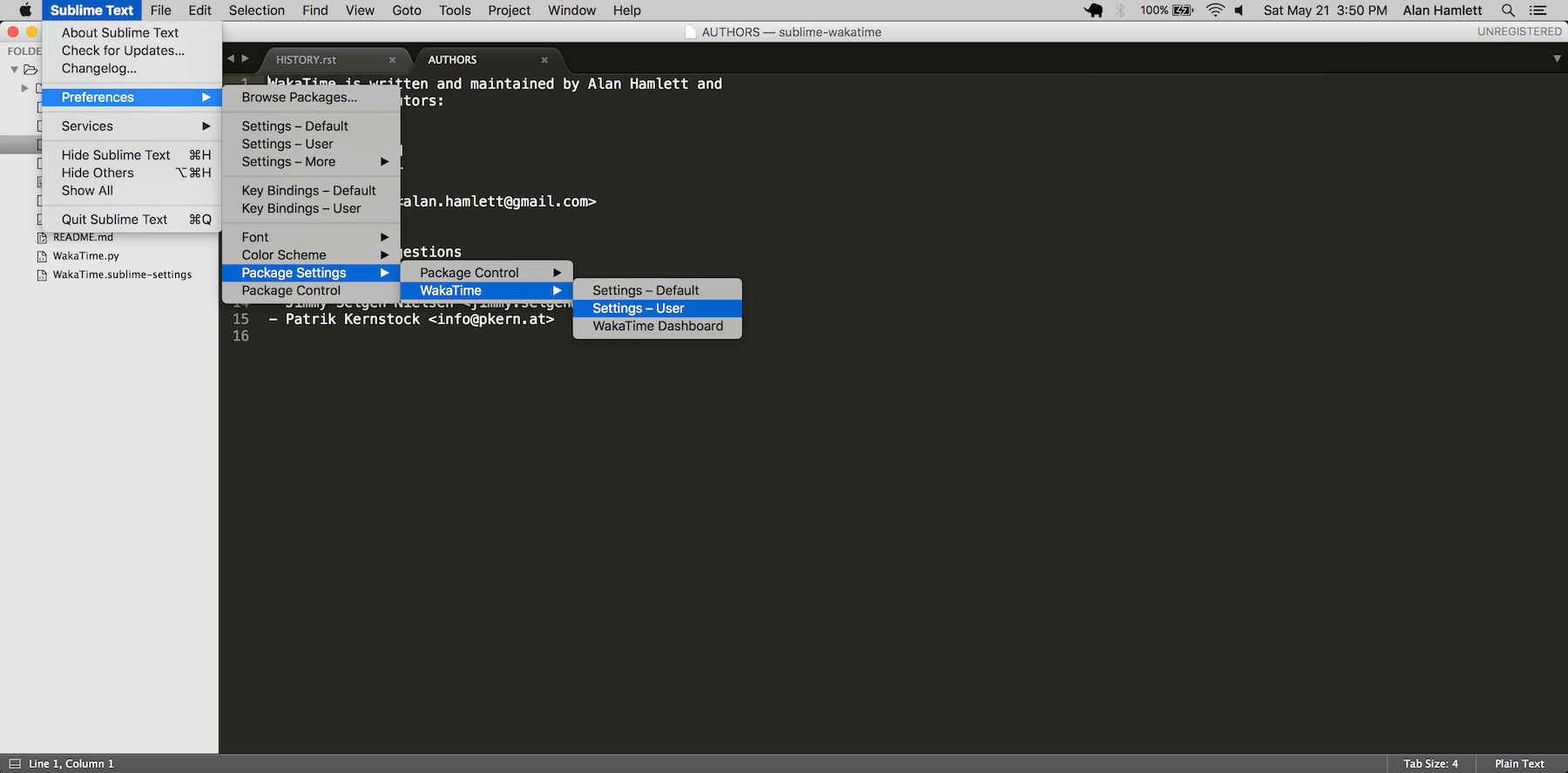| packages/wakatime | ||
| .gitignore | ||
| .no-sublime-package | ||
| AUTHORS | ||
| Default.sublime-commands | ||
| HISTORY.rst | ||
| LICENSE | ||
| Main.sublime-menu | ||
| README.md | ||
| WakaTime.py | ||
| WakaTime.sublime-settings | ||
sublime-rana
Metrics, insights, and time tracking automatically generated from your programming activity.
This is a fork of sublime-wakatime, unaffiliated with wakatime, modified to make it easier to use with rana or any other wakatime-compatible time tracking tools.
Installation
- Clone this repo to
~/.config/sublime-text-3/Packages.
Troubleshooting
First, turn on debug mode in your WakaTime.sublime-settings file.
Add the line: "debug": true
Then, open your Sublime Console with View → Show Console ( CTRL + ` ) to see the plugin executing the cli process when sending a heartbeat.
Also, tail your $HOME/.wakatime.log file to debug wakatime cli problems.
The How to Debug Plugins guide shows how to check when coding activity was last received from your editor using the User Agents API. For more general troubleshooting info, see the wakatime-cli Troubleshooting Section.
